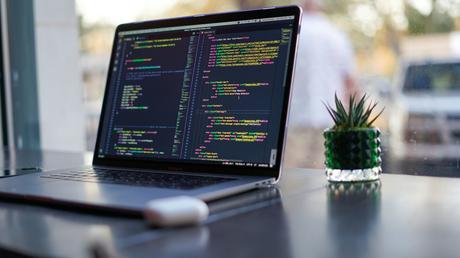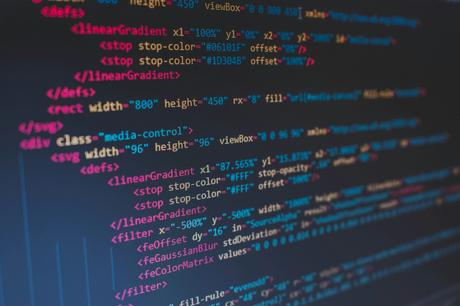Microsoft Notepad is often overlooked as a basic text editor, dismissed by many as a tool for quick jotting down notes or drafting simple texts. However, beneath its unassuming facade lies a treasure trove of hidden programming tricks waiting to be uncovered. In this article, we delve into the depths of Microsoft Notepad to unearth five cool programming hacks that will challenge your perception of this humble application. From secret shortcuts to powerful automation features, these tricks will revolutionize your coding experience and showcase the untapped potential of an often underestimated software tool. Prepare to be amazed as we unlock the hidden capabilities of Microsoft Notepad and transform it into a powerhouse for programmers seeking efficiency and innovation in their workflow.
Introduction: Notepad and its hidden capabilities
Notepad, the simplistic text editor bundled with Windows operating systems, is often underestimated for its capabilities. Beyond its basic functionalities, Notepad harbors several hidden features that can enhance your programming experience. For instance, did you know that you can open and edit code in multiple tabs within Notepad by simply dragging a tab to create a new one? This feature alone can significantly improve workflow efficiency for coders who prefer using a lightweight editor.
Additionally, Notepad allows users to easily insert date and time stamps into their code with just a few simple commands. This might seem like a small utility, but it can be incredibly handy when tracking changes or debugging your program at various stages of development. These lesser-known tricks within Notepad demonstrate its versatility as a tool not only for jotting down quick notes but also for handling coding tasks efficiently without the need for complex software installations.

Text Manipulation: Using shortcuts for editing
Text manipulation can be a tedious task, especially when working with large chunks of code or text. However, using shortcuts for editing can significantly speed up the process and enhance productivity. One handy trick is using Ctrl + D to duplicate a selected line in Notepad instantly. This simple shortcut eliminates the need to manually copy and paste, saving time and reducing errors.
Another nifty shortcut for text manipulation is using Ctrl + F3 to find the next occurrence of the selected text in Notepad. This feature allows you to quickly navigate through your document without having to scroll or search manually. By mastering these shortcuts, you can streamline your editing process and work more efficiently within Microsoft Notepad. Experimenting with different shortcuts and incorporating them into your workflow can greatly improve your coding experience.
Syntax Highlighting: Customizing language styles
When it comes to customizing language styles in Microsoft Notepad for syntax highlighting, the possibilities are endless. By delving into the settings and tinkering with the color schemes and fonts, you can create a personalized coding environment that not only enhances readability but also reflects your unique style. Whether you prefer a minimalist look with subtle hues or bold, contrasting colors for each type of code element, Notepad allows you to tailor the appearance to suit your preferences.
Moreover, customizing language styles in Notepad can significantly improve your coding experience by making it easier to distinguish between different parts of your code at a glance. With well-chosen colors and font styles for keywords, variables, comments, and more, you can streamline your coding workflow and reduce the likelihood of errors caused by overlooking important details. So why settle for a generic text editor when you can unleash your creativity and optimize your productivity with customized syntax highlighting options in Microsoft Notepad?

Macro Recording: Automating repetitive tasks
Macro recording is a powerful tool that allows users to automate repetitive tasks with ease. By simply recording a series of actions, users can then replay them as many times as needed, saving time and effort in the process. This feature is particularly useful for tasks like data entry, formatting text, or performing routine edits on a large scale.
What makes macro recording even more exciting is its potential for customization. Users can edit and fine-tune recorded macros to suit their specific needs, adding conditional statements, loop structures, and more complex commands to create highly efficient automation sequences. With this level of control, the possibilities are truly endless when it comes to streamlining workflows and boosting productivity.
Imagine being able to transform hours of tedious work into just a few clicks – that’s the magic of macro recording. Embracing this feature not only enhances efficiency but also opens up new avenues for creativity and problem-solving within the realm of programming. So next time you find yourself stuck in a cycle of repetitive tasks, remember that macro recording could be your ticket to breaking free and exploring new horizons in automation.
ASCII Art: Creating designs with characters
ASCII art, a form of visual expression using characters from the ASCII standard, has been an intriguing aspect of digital design for decades. By skillfully arranging characters such as letters, numbers, and symbols, artists can create intricate and detailed drawings that evoke emotions and convey messages. From simple designs like hearts or smiley faces to complex illustrations resembling famous artworks, the possibilities are endless in the world of ASCII art.
What makes ASCII art truly fascinating is its accessibility and versatility. With just a text editor like Microsoft Notepad and some creativity, anyone can become an ASCII artist. The process involves strategic placement of characters to form shapes and patterns that come together to reveal a larger image. It’s like solving a puzzle with letters and symbols, where every keystroke contributes to the final masterpiece.

External Tools Integration: Extending functionality
External Tools Integration is a game-changer in leveraging Microsoft Notepad’s capabilities beyond its basic functionalities. By integrating external tools seamlessly into Notepad, programmers can perform complex tasks with ease. This feature unleashes a world of possibilities, allowing users to streamline their workflow and boost productivity.
Extending the functionality of Notepad through external tools integration opens up endless opportunities for customization and automation. With the ability to integrate various programming tools, developers can enhance their coding experience and tackle challenges more efficiently. From syntax highlighting to code analysis, these integrations allow users to tailor Notepad to suit their specific needs and preferences. The seamless integration of external tools gives programmers the power to optimize their workflow and elevate their coding skills.
Conclusion: Notepad is more than a basic editor
In conclusion, Microsoft Notepad is undoubtedly more than just a basic text editor. Its simplicity and lightweight design may overshadow its potential as a powerful programming tool. By utilizing features like syntax highlighting and line numbering, Notepad can enhance the coding experience for both beginners and experienced programmers alike.
Moreover, the ability to run scripts directly within Notepad opens up new possibilities for quick testing and prototyping. This hidden gem within Windows has the potential to streamline programming tasks and boost productivity in unexpected ways. So next time you underestimate the capabilities of Notepad, think again – it might just surprise you with its versatility and usefulness in your coding endeavors.

